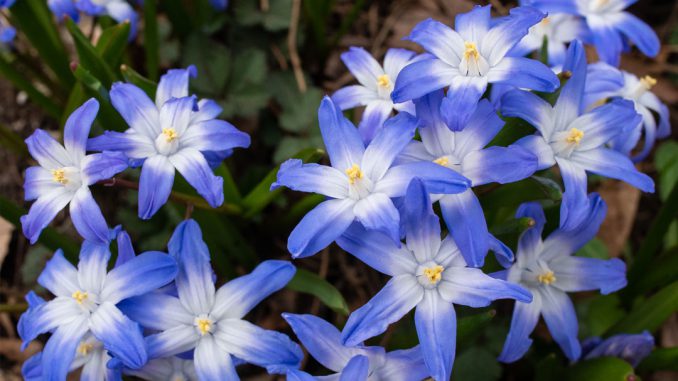
Does lasting beauty exist outside of Hollywood? Yes, it could be in your garden! And if you’re tidying up borders before taking off for warmer climates, or perhaps just snoozing through autumn – are you sure that garden growth is really finished for this year? Think again.
It’s autumn. Tree leaves are turning colour, perennial plants are dying down and the season is ready to close with the first light frost. Or so it would seem. But there is a category of plants that are still in expansive, spreading mode and ready to make landscape gains from October through mid-December.
Plants with underground rhizomes and aggressive root systems are invigorated in cool temperatures and make significant growth that won’t show above ground until next spring. Light frost only encourages them and it takes a deep, penetrating frost to shut them down. But turn your back on them now and they’ll be in your face next spring.
Rhizomes are modified stems running horizontally underground at shallow, six- to 10-inch levels. You have probably encountered a rhizome when weeding or digging a planting hole; it’s a horizontal, swollen, stem-like structure connected to thinner horizontal roots at each end, with fine hairy roots growing downward. Rhizomes are powerhouses of reproductive activity that store energy and direct growth. They are very effective at spreading plants across garden spaces during the spring growth bonanza and again in autumn, and will out-compete more refined, less vigorous root systems.
What are these plants with such thuggish roots? Some are notorious weeds which we know to remove, such as creeping Charlie, horse tail, stinging nettle, Japanese knotweed and poison ivy. However, others are such familiar perennial plants as bugleweed (ajuga reptans), bellflowers (Campanula rapunculoides) Chinese lanterns (Physalis alkekengi), bunchberry (Cornus canadensis), interrupted fern (Osmunda claytoniana), plume poppy (Macleya cordata) and yellow archangel (Lamium galeobdolon). These ornamental spreading plants are an asset when you want to fill bare space, but their vigour might need to be controlled when they’re given luxurious living conditions in garden beds.
What to do about this? Research ground-cover plants before purchasing them, whether they have simple root systems, or include rhizomes in their underground structure. Not all are invasive, such as day lilies and irises that grow from non-aggressive rhizomes. Use spreading ground covers wisely, installing them as landscape cover where you have bare and open space to fill. They will do this well and make you happy; but give them their own area and avoid putting them into garden beds where they can swiftly overwhelm less vigorous perennial neighbours.
Vigilance is the key to keeping useful spreading plants contained in their areas. At end of summer, check to see how much growth they’ve accomplished. If ground-cover plants have abutted their edges with lawns or other ornamental plantings, that’s the sign that they will be invading next spring with underground roots and rhizomes. Set them back in autumn by digging a clear six- to 12-inch (30 cm) division between areas, removing roots and rhizomes which you may uncover. This will be the stop gap that brings peace of mind when you settle down under a warm sun this winter.
Lasting beauty
After a winter away or possibly spent close to home fires, everyone looks forward to a vibrant display of spring bulbs. Their flowers make a strong showing in the first and second years, but dwindle in subsequent spring seasons. Eventually, this energy is depleted and foliage of tulips and narcissus come up ‘blind’, producing leaves with no flower buds. Then new bulbs are purchased and planted in autumn, providing a strong showing for perhaps another two years.
This lack of long-term performance can be remedied by understanding what bulbs need. They want to be deadheaded before seeds form, and fertilized (with a granular fertilizer for perennials) in spring just when the flowers are finished, but the green foliage is still standing. (The leaves should be allowed to stand until at least half brown.) And they need to be planted in soil that will be moist in spring, but dry in summer to avoid rotting the bulbs. Planting bulbs in a flower bed that will be watered through summer is a sure way to invite infection by fungus diseases. Bulbs are better planted near shrubs and anywhere that not too much summer irrigation is available.
However, there are some bulbs that can withstand moderately moist soils, and will continue to return for a decade, or even longer! The large category of perennial Darwin tulips contains a rainbow of colour selections that bloom on tall stems through May. In the same month, the charming bells of scilla siberica will spread to form blue carpets in planting areas, and eventually into lawns. (Not to worry, the short scilla foliage will die down and disappear quickly.) Glory-of-the-snow (Chionodoxa forbessii) is another of the long-lived and spreading small spring bulbs with upturned blue-and-white flowers. These beautiful spring bulb displays will last for so many seasons that you won’t remember when you planted them.


